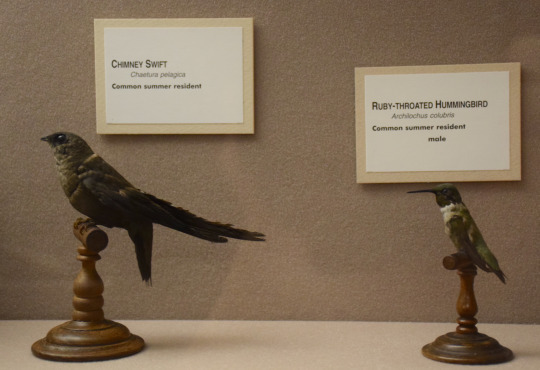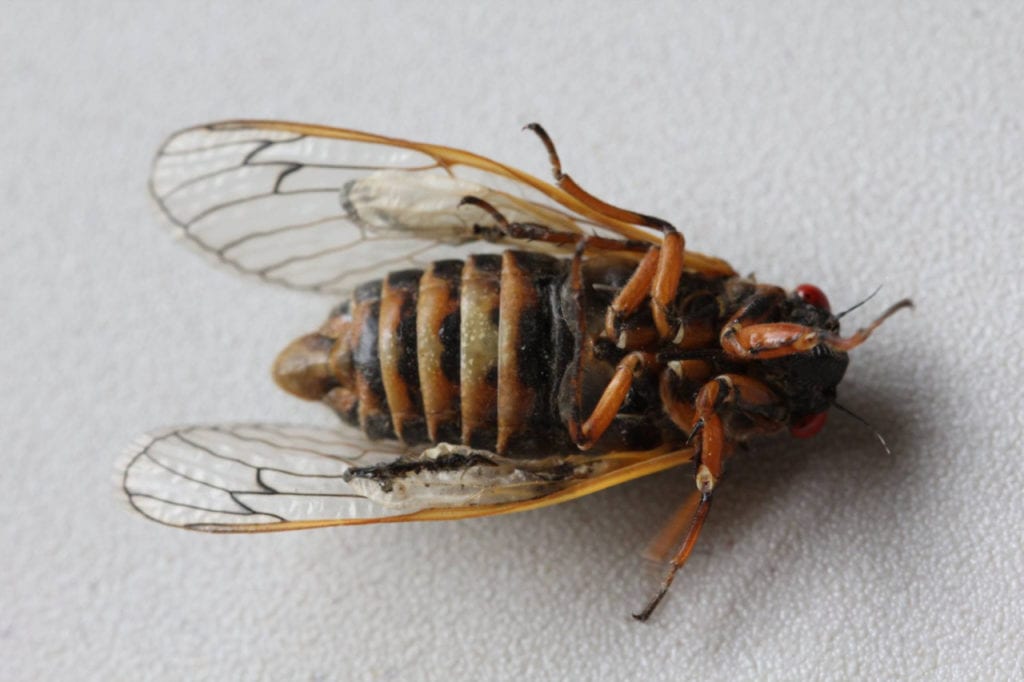
A foxy sparrow banded at Powdermill Nature Reserve, Carnegie Museum of Natural History’s environmental research center.
Carnegie Museum of Natural History
One of the Four Carnegie Museums of Pittsburgh
by wpengine

A foxy sparrow banded at Powdermill Nature Reserve, Carnegie Museum of Natural History’s environmental research center.
by wpengine

Each week, staff at Powdermill Nature Reserve staff posts stunning,
high-resolution photos of birds that land in their nets on their Facebook page.
The photos show detailed characteristics of local birds, like the
subtle coloring of a Common Yellowthroat or the sharp beak of a Pine
Siskin, that are hard to see as they fly above.
Powdermill is Carnegie Museum of Natural History’s environmental
research center in Rector Pa, where thousands of birds are identified, banded,
and released each year. As they band, research staffers often snap pictures
that highlight the huge variety of different birds flying through Western
Pennsylvania’s skies.
One favorite is the Ruby-throated hummingbird, which has
iridescent, fuchsia feathers on its neck that abut a dark green heads and long
black beak.
Comparing the Powdermill pictures to Bird Hall in the museum
is an interesting exercise. For example, Powdermill’s high resolution pictures let
you appreciate each and every line of the hummingbird’s bright feathers. But in
the museum, to see a taxidermy mount of a ruby throated humming bird
helps you grasp the miniscule size of these little birds that don’t often grow
larger than 3.5 inches.
Powdermill’s pictures and Bird Halls specimens work
in tandem to encourage us to pause and consider tiny players in our huge
local ecosystem, helping us all foster a little more appreciation for the
natural world.

by wpengine

Fall is an exciting and busy time for our avian researchers at Powdermill Nature Reserve, Carnegie Museum of Natural History’s environmental research center in Rector Pennsylvania.
As birds migrate south, thousands fly through Powdermill, where they are identified, banded, and studied before they continue their long journey to their winter nesting grounds.
Researchers band anything from worm-eating Warblers to brightly colored purple finches in their nets each year.
This fall alone, more than 4,000 birds representing 150+ species have been studied and banded since September. Researchers catch the birds in specially designed mist nets that are cast each morning before dawn. Caught birds are carefully transported to a banding station, where they are identified, measured, and given a small band issued through the US Geological Survey. Bands provide information for other researchers and don’t affect the birds flight, nesting, or eating habits.
Above all else, the well being of every bird is Powdermill’s top priority at all times. The entire banding process takes less than a minute, and the vast majority of birds are actually quite calm during their short visit at the banding station.
But why band birds at all?
The fundamental goal of bird banding has always been to record the age, sex, wing length, fat deposits, and body mass of captured species as a way of monitoring, year to year, how avian populations are faring in the wild.
Banding gives us insight into many things like the life cycles and longevity of birds, habitat use, and how disease and environmental toxins are affecting wild bird populations.
Want to learn more? You can see monthly and annual banding summaries online or follow Powdermill Nature Reserve on Facebook for weekly updates and stunning pictures.
by wpengine
by wpengine

Researchers at Powdermill Nature Reserve, the environmental research center of Carnegie Museum of Natural History, are documenting the health of Western Pennsylvania’s flora and fauna with bird banding, long-term studies, and other key environmental research out of Rector Pa.
Those efforts will be bolstered thanks to a recent $700,000 grant from the Richard King Mellon Foundation, which will further position Powdermill as an ecological research powerhouse of the Appalachian region. The grant will fund new technology like drone imagining and radio frequency “nanotags” to study and protect birds. The focal species groups that will be studied are birds, pollinators, salamanders, and forest trees.
Powdermill scientists are eager to use nanotag radio telemetry to improve their tracking of migratory birds, attaching tiny radio beacons to birds that will track their migration as they fly by special towers equipped with sensors.
The sensors will log the tagged birds in a central database, allowing scientists to track birds from South America to Canada without recapturing them. Since only about one in 1,000 birds banded at Powdermill are ever recaptured, the new technology is sure to improve the reserve’s data collection efforts.
“As this grant strengthens our scientific activities, Powdermill will accordingly improve its educational outreach regarding pressing environmental issues of interest to concerned citizens,” said Powdermill Director John Wenzel.
Check out Powdermill Nature Reserve’s Facebook page for beautiful images and snapshots of some of the important working happening there that will benefit the entire Western Pennsylvania region.
by wpengine



The cicadas are here! Staff at Powdermill Nature Reserve, Carnegie Museum of Natural History’s environmental research center, posted these up-close photos of this 17-year cicada and some more information about it last week.
“This specimen in particular is Magicicada septendecim, indicated by the broad orange stripes on the underside of the abdomen. It is also a male, because of the tymbals located near the base of the wings on each side. These organs are what the males use to make a loud buzzing sound to attract females. When many males sing together, it can be quite deafening!
This cicada has spent seventeen long years underground as a wingless nymph, feeding off of the juices from plant roots. In the year of its emergence, it waits until the soil temperature in its underground tunnel reaches 64 degrees, and then climbs up out of the ground (often onto a tree trunk or other surface) for its final molt into adulthood.”
Have the cicadas come to your neighborhood? Report your sightings at Magicicada.org, where you can also find much more additional information about periodical cicadas!
